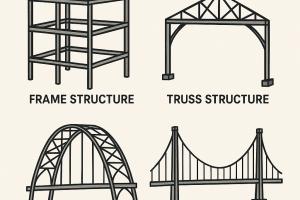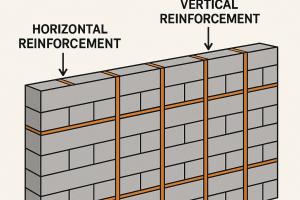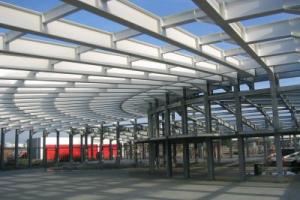Steel Trusses - Types and Advantages in Construction

Steel Trusses Definition
Steel trusses are structural frameworks composed of steel members that are interconnected to form a series of triangular elements. These triangular elements provide strength, stability, and efficient load distribution in various construction projects. Steel trusses are widely used in a range of applications, including roofs, bridges, industrial buildings, and even exhibition halls.
The primary advantage of steel trusses is their high strength-to-weight ratio. Steel is known for its excellent tensile strength, allowing for the creation of lightweight yet robust truss systems. The triangular arrangement of members in a truss helps distribute loads evenly, minimizing bending moments and maximizing load-carrying capacity.
Types of Steel Trusses
There are different types of steel trusses, each designed to cater to specific structural requirements and architectural designs. Some common types include:
1. Pratt Truss:
A Pratt truss consists of diagonal members that slope down towards the center, meeting vertical members at the apexes. This truss configuration is efficient in resisting both tension and compression forces and is commonly used in roof structures and bridges.
2. Warren Truss:
A Warren truss has diagonals that alternate in direction, forming a series of equilateral triangles. This truss type is commonly used for spans up to 30 meters and provides efficient load distribution. Warren trusses are commonly used in industrial buildings, warehouses, and pedestrian bridges.
3. Howe Truss:
A Howe truss has diagonal members that slope upward towards the center, meeting vertical members at the apexes. This truss type is often used in medium-span applications and is commonly employed in roof structures and bridges.
4. Scissor Truss:
A scissor truss consists of two Pratt trusses or Warren trusses that intersect at the center, resembling an "X" shape. Scissor trusses are commonly used in roof structures to create vaulted or cathedral ceilings, providing an open and aesthetically pleasing interior space.
Advantages of Using Steel Trusses in Construction
Steel trusses offer several advantages in construction, including:
- High strength-to-weight ratio: Steel trusses provide exceptional strength while being lightweight, resulting in efficient and cost-effective structures.
- Versatility: Steel trusses can be fabricated into various shapes and sizes to meet specific architectural and design requirements, allowing for flexibility in construction.
- Speed of construction: Steel trusses are typically prefabricated, enabling faster installation and construction compared to traditional building methods.
- Durability and longevity: Steel is highly durable, resistant to weathering, and can withstand heavy loads, making steel trusses a long-lasting structural solution.
In summary, steel trusses are integral components of many construction projects. Their design and configuration provide strength, stability, and efficient load distribution. Steel trusses offer versatility, speed of construction, and durability, making them a popular choice in a wide range of applications.





